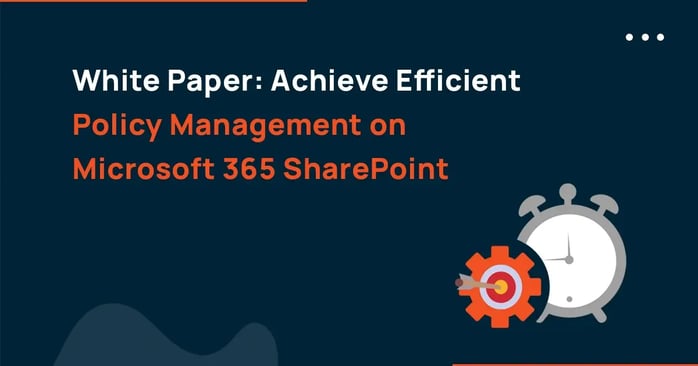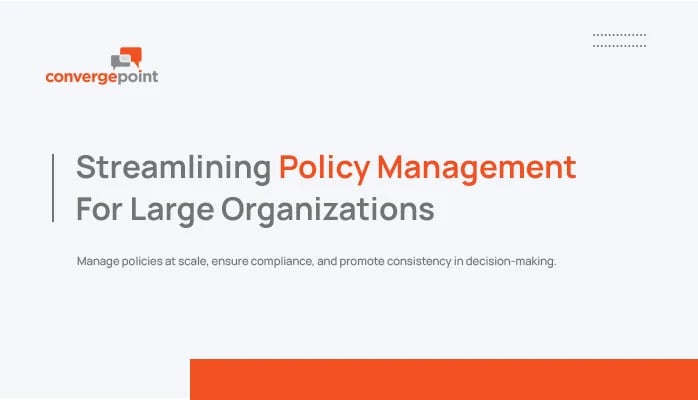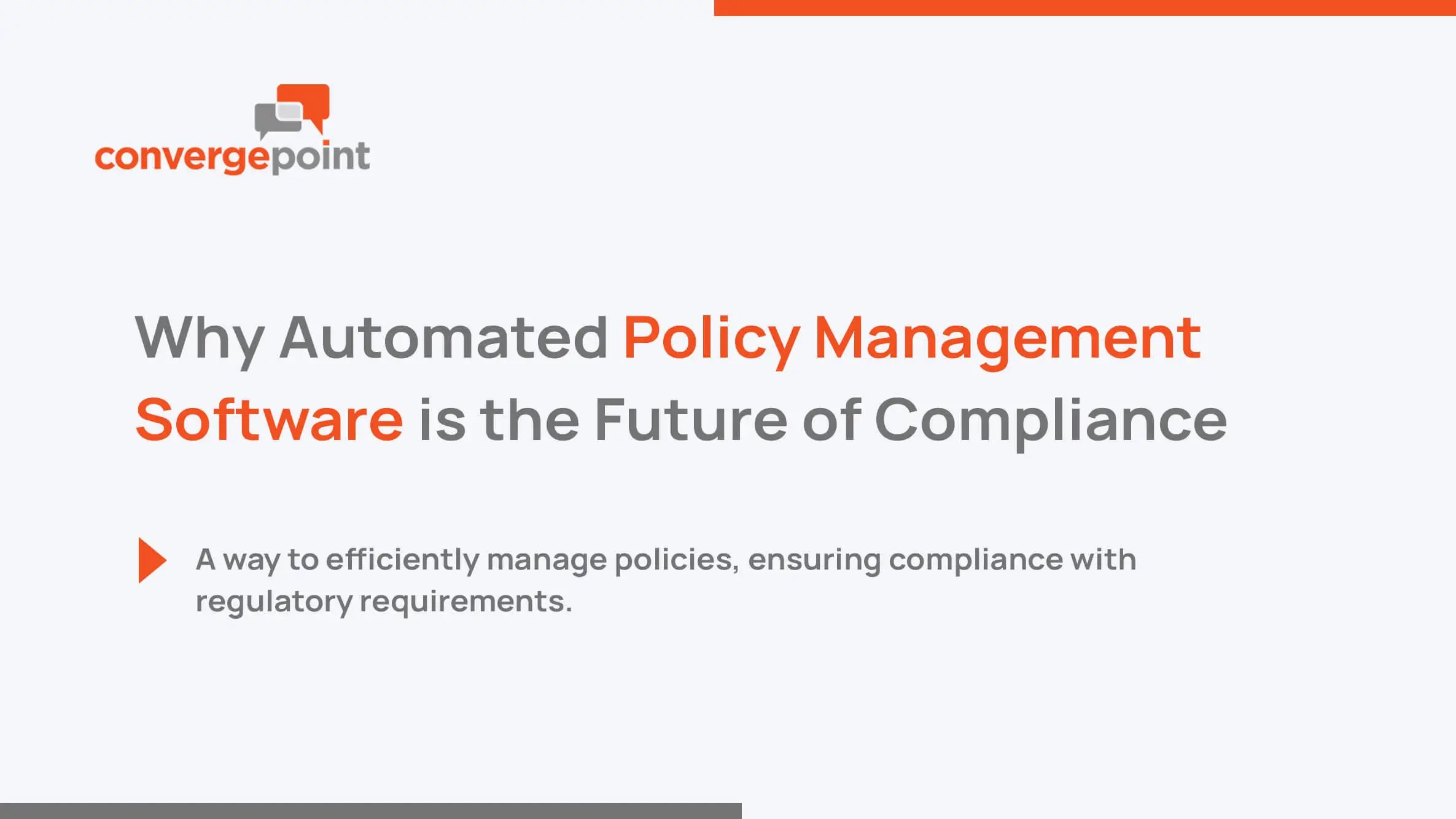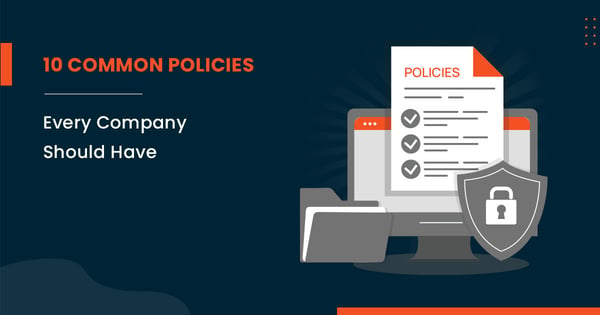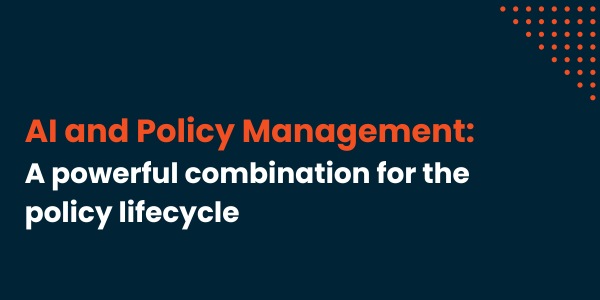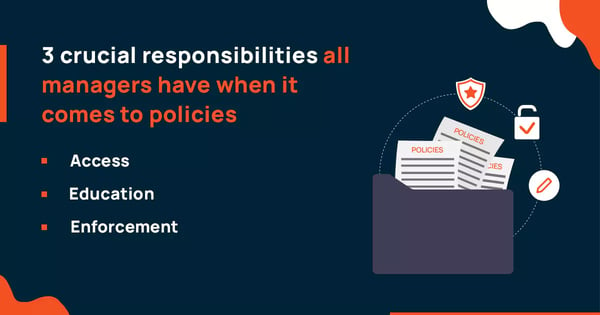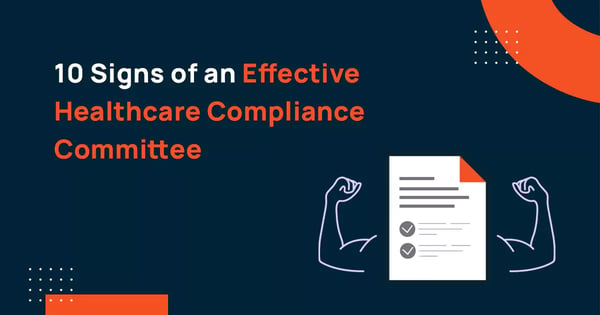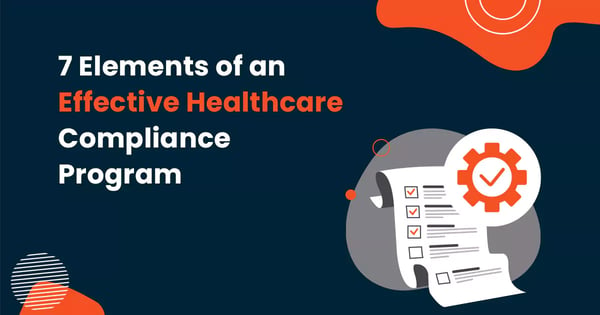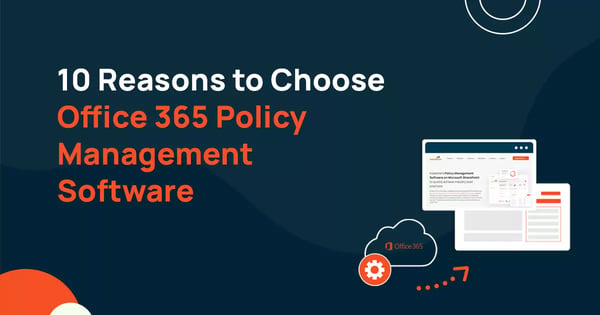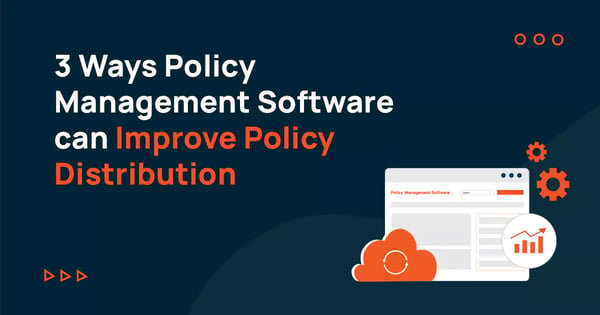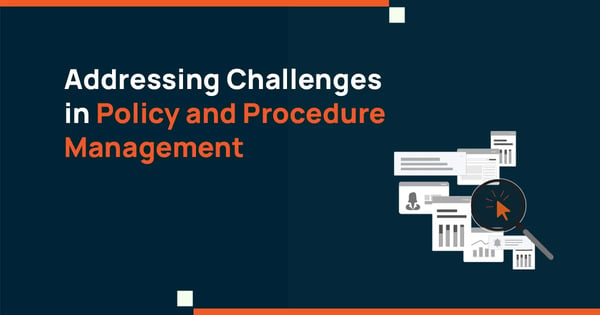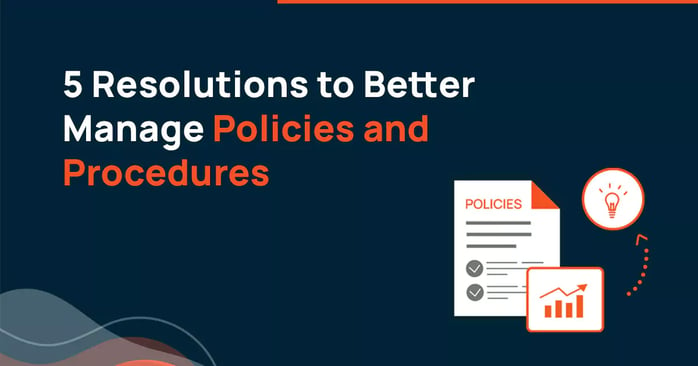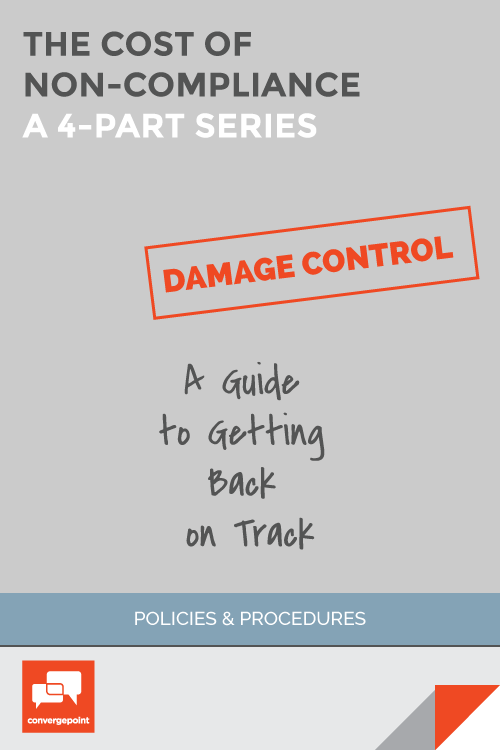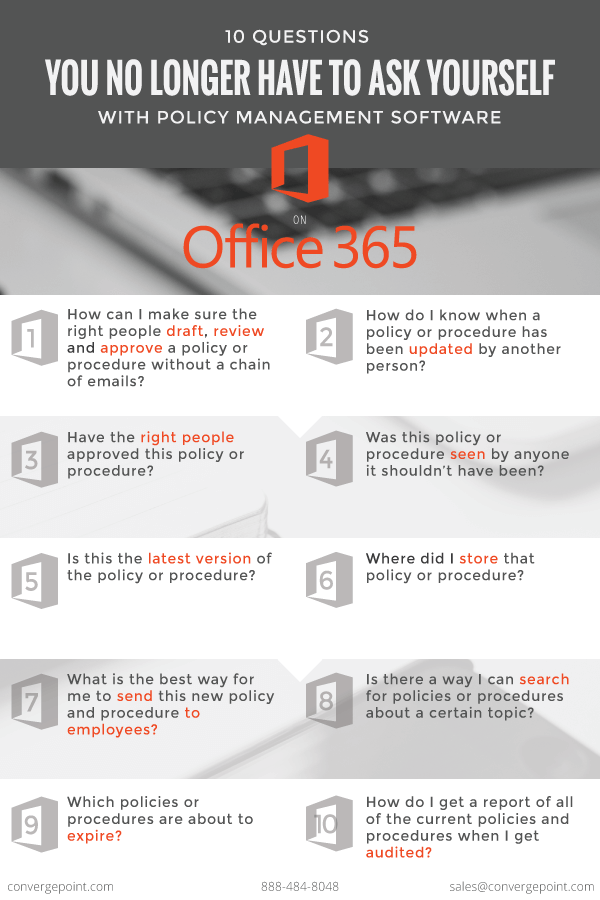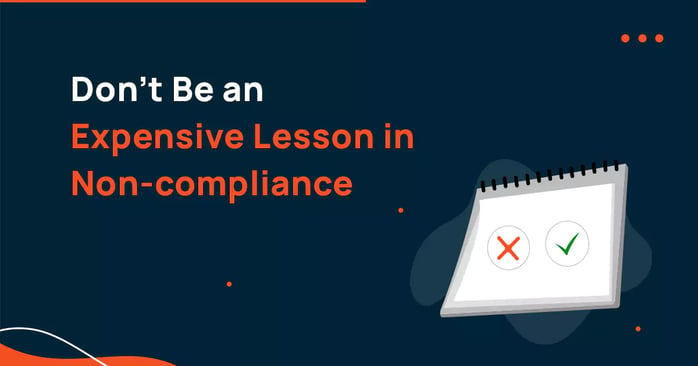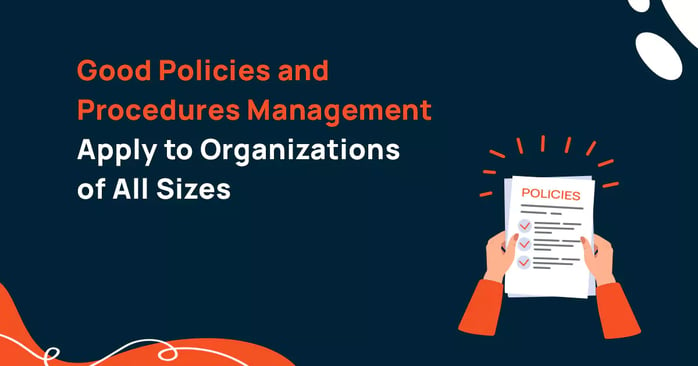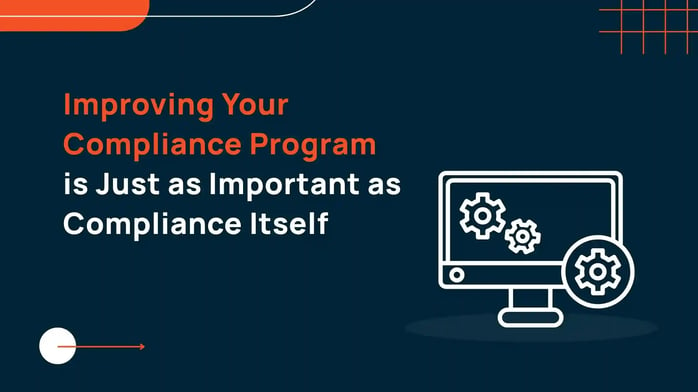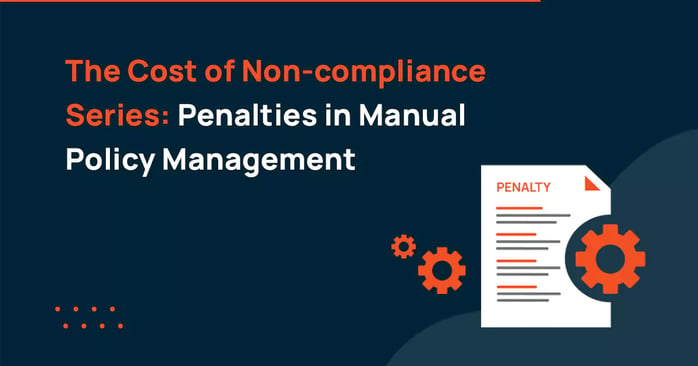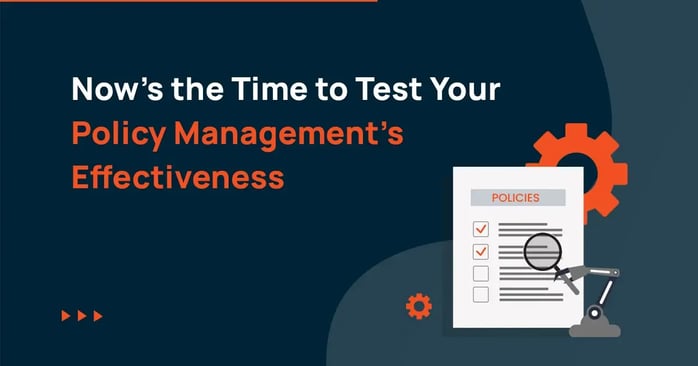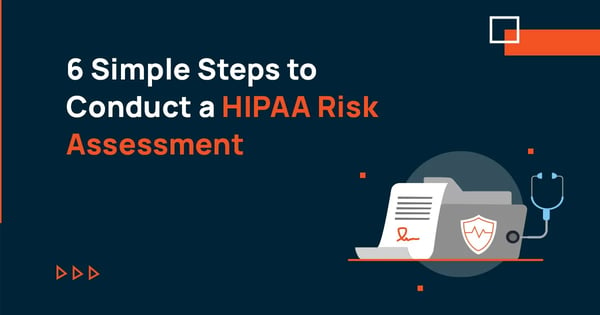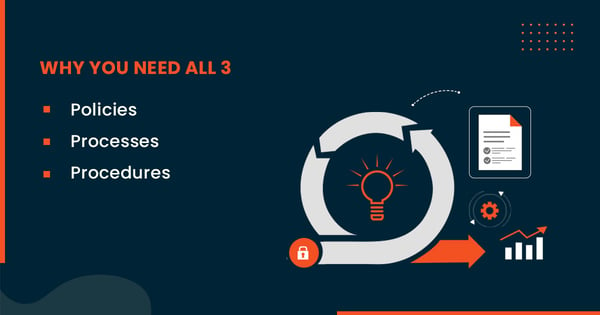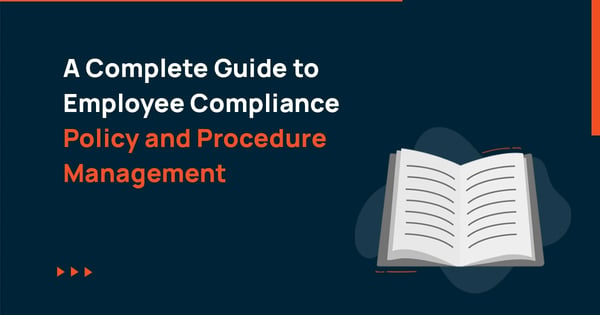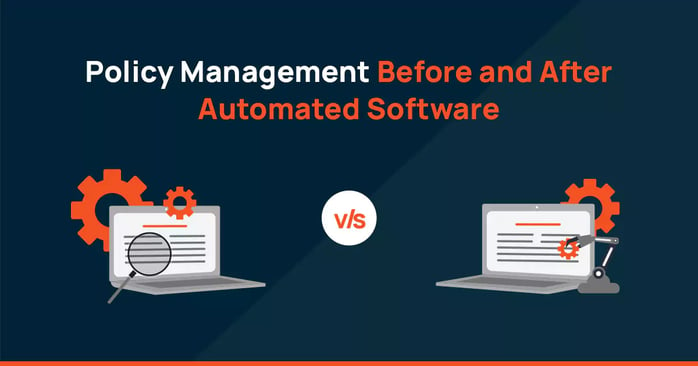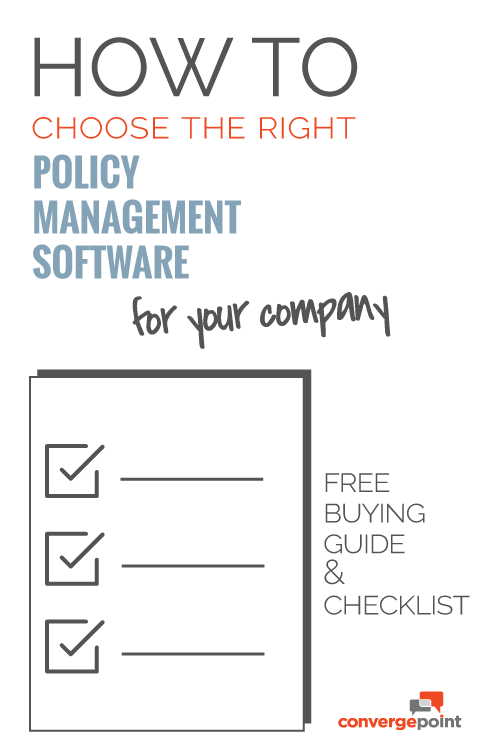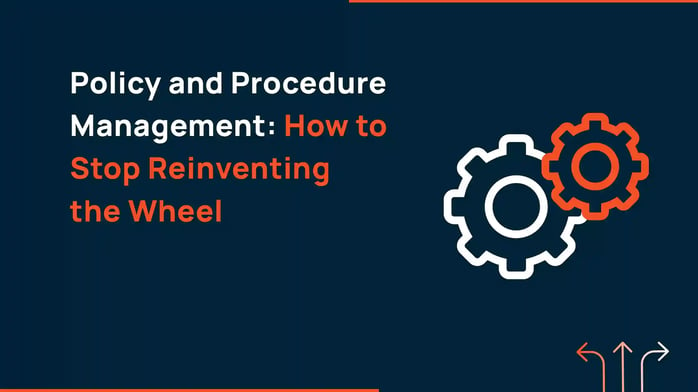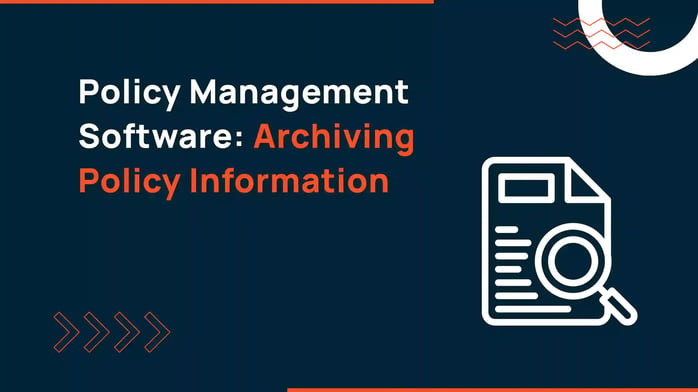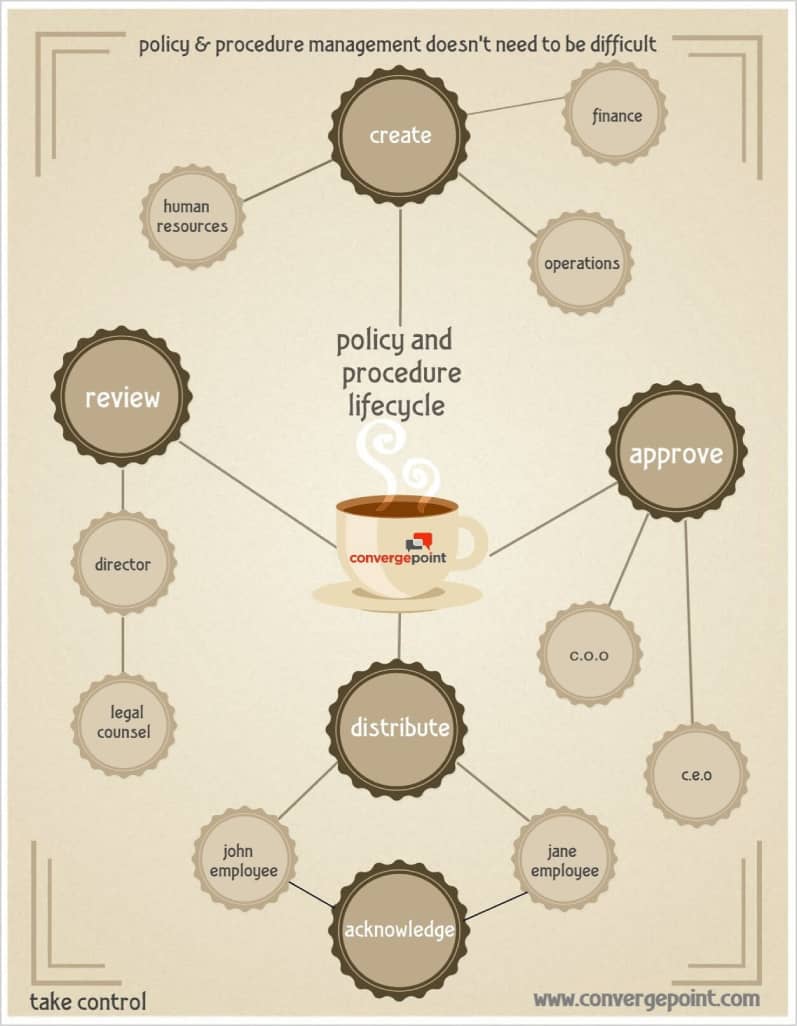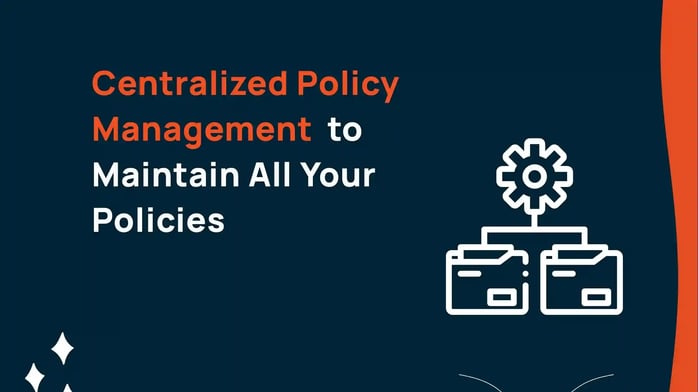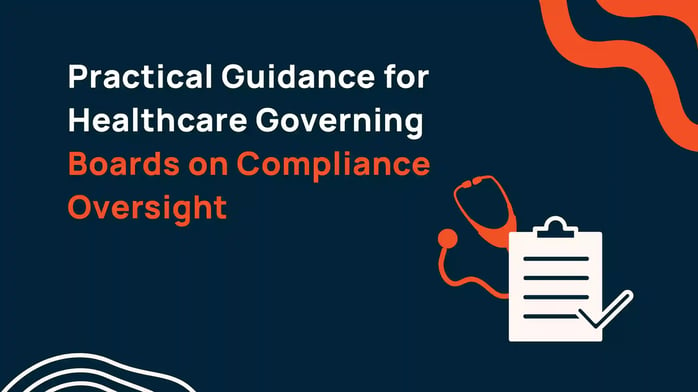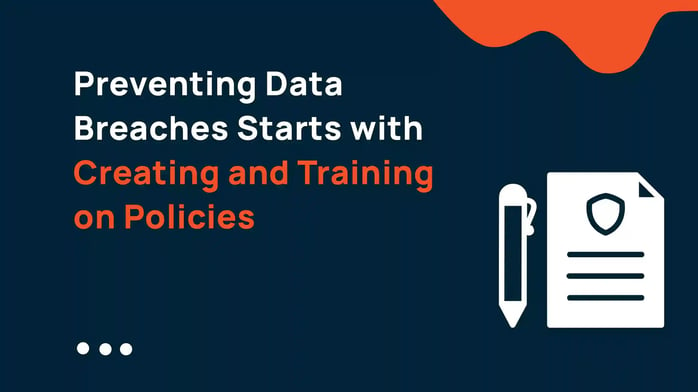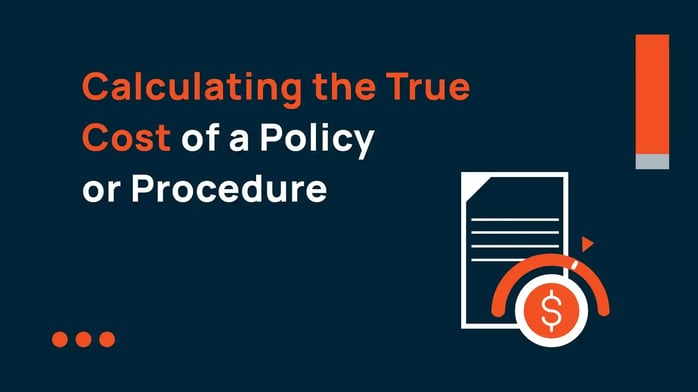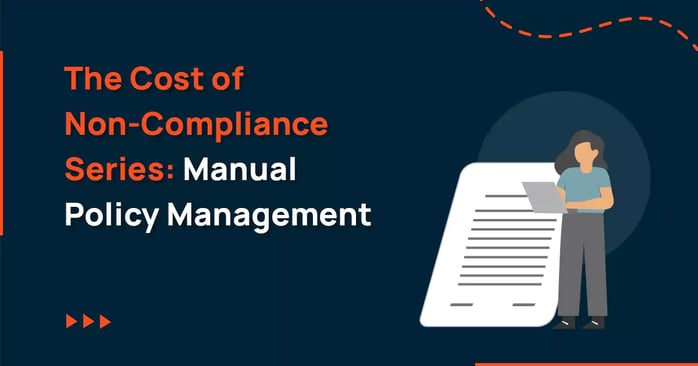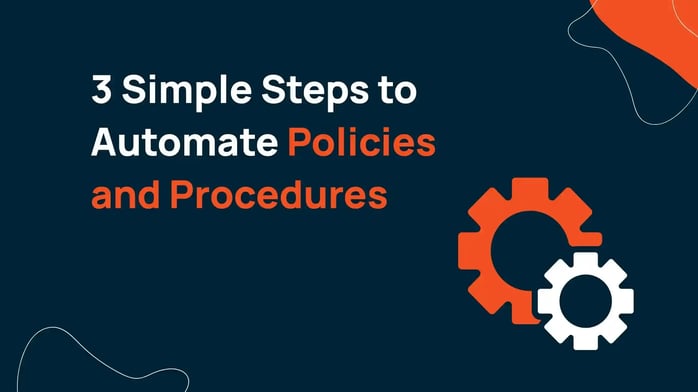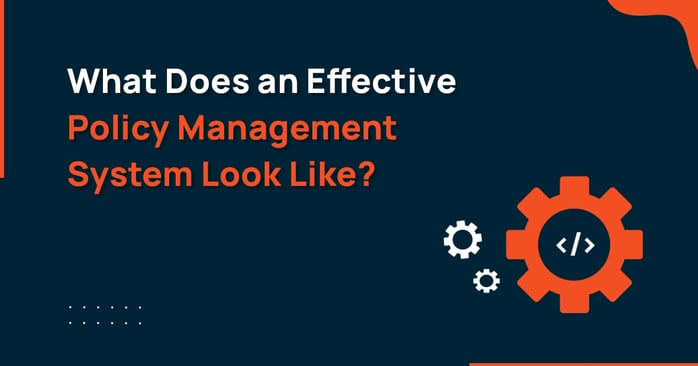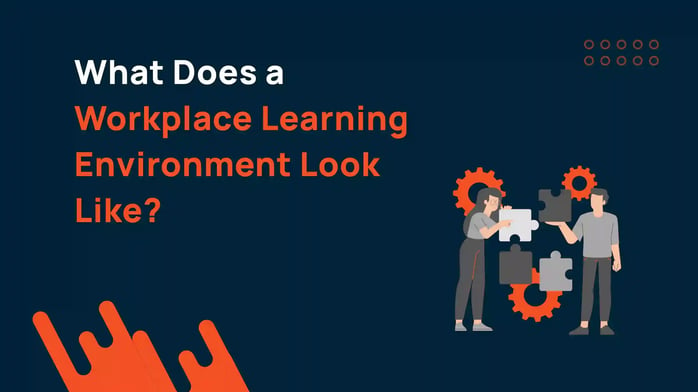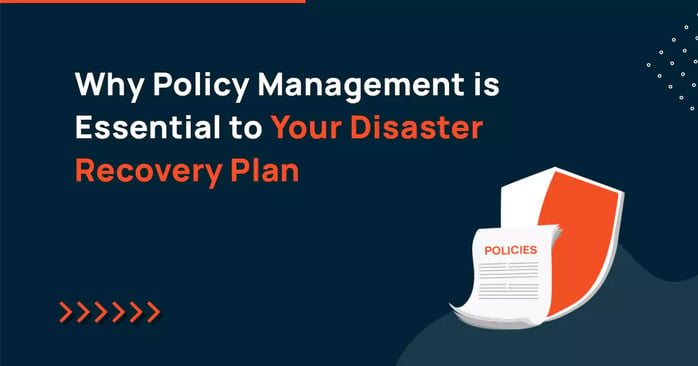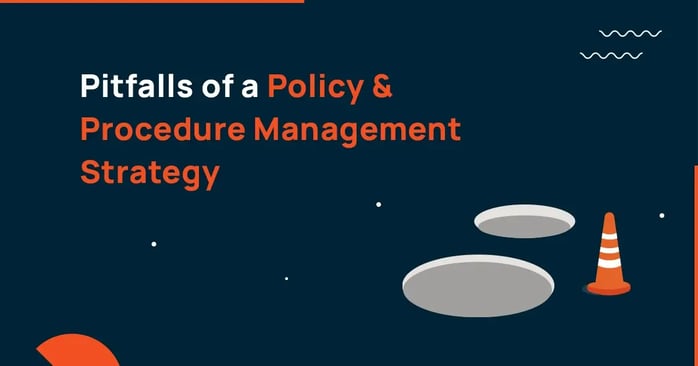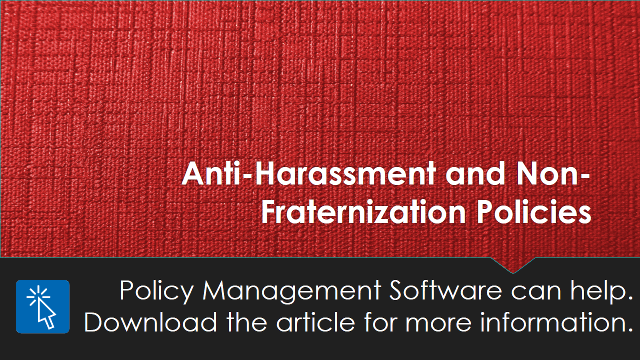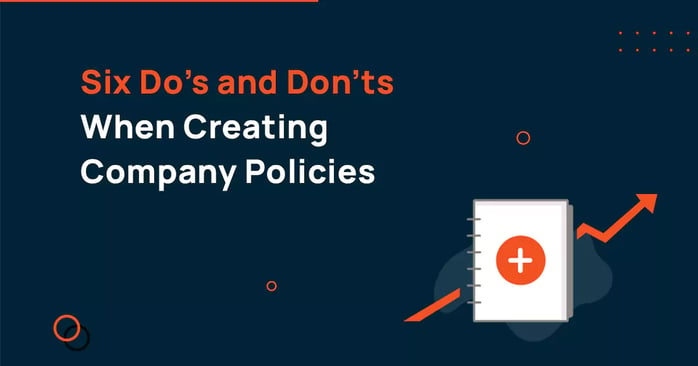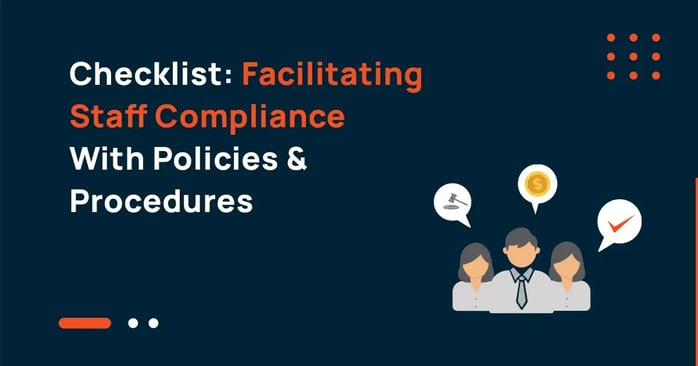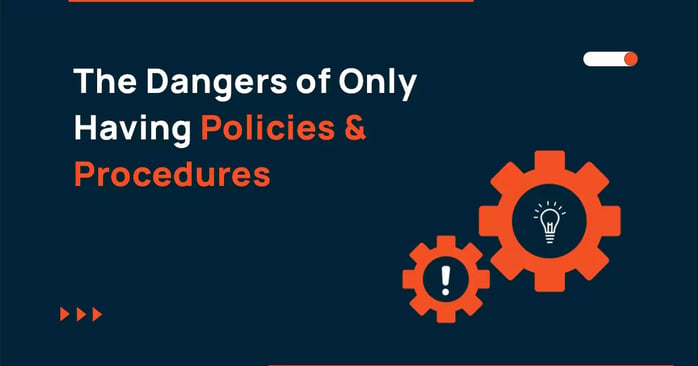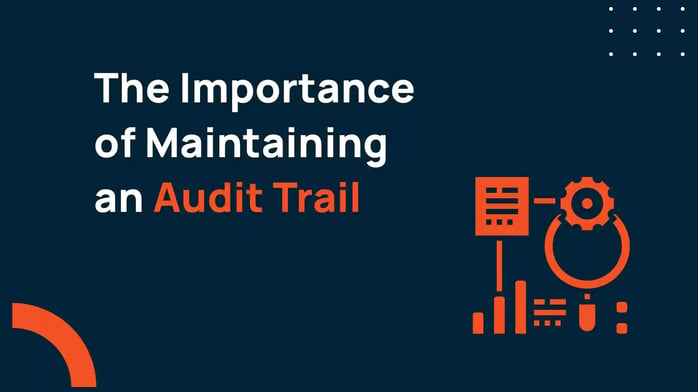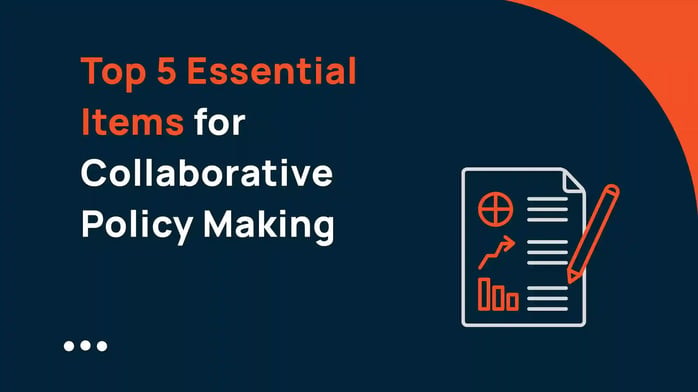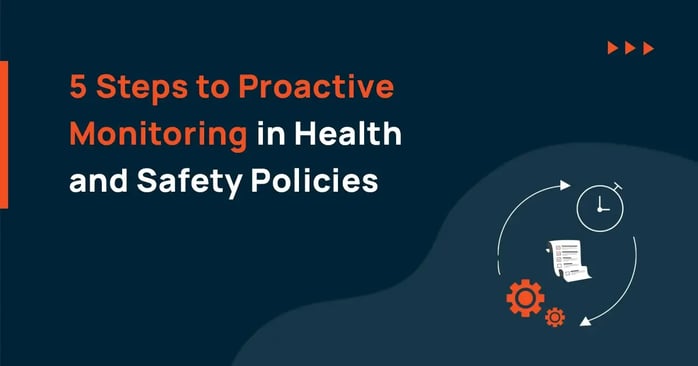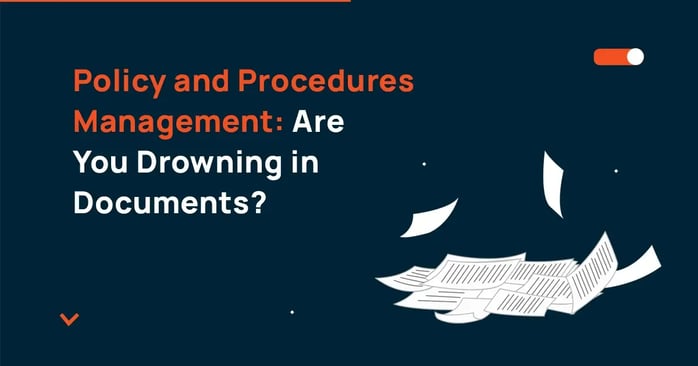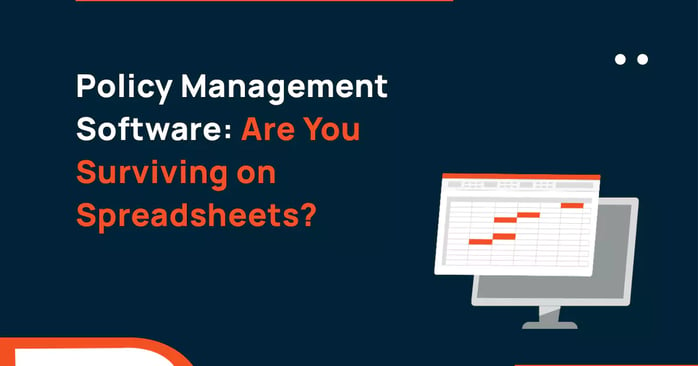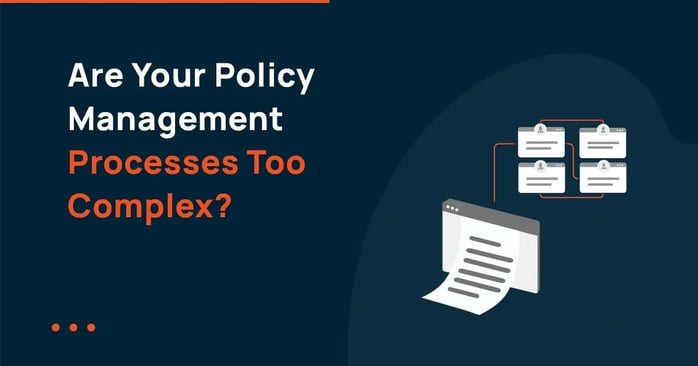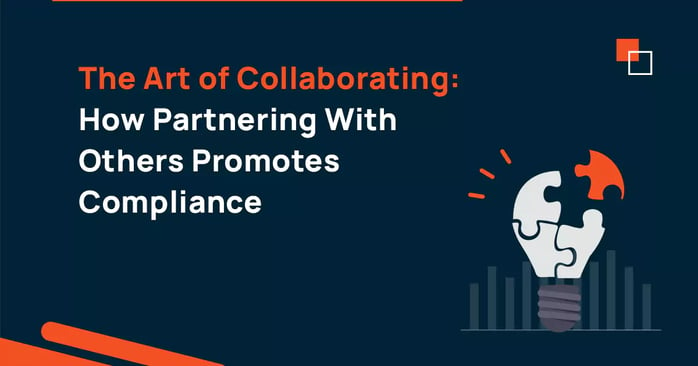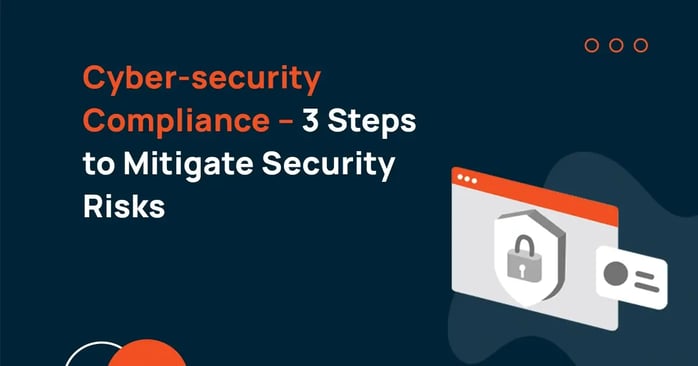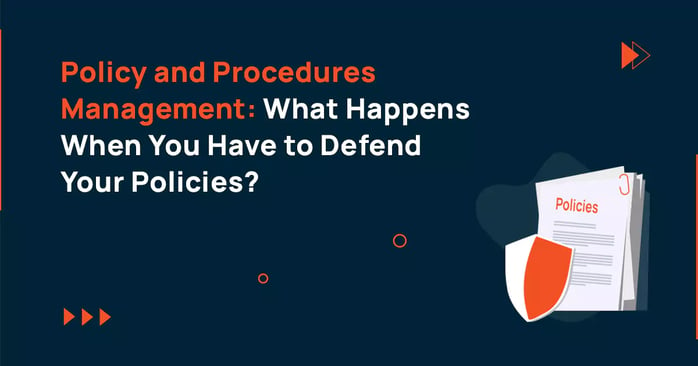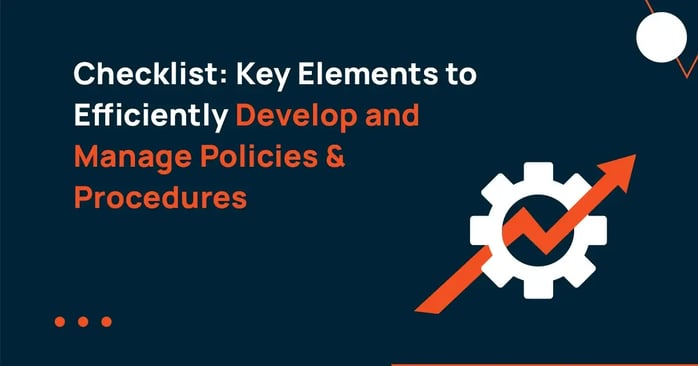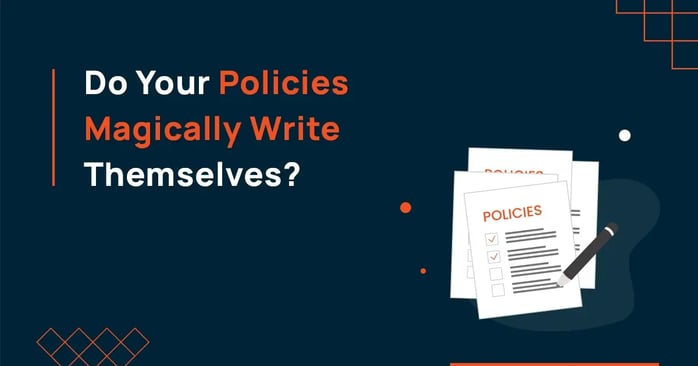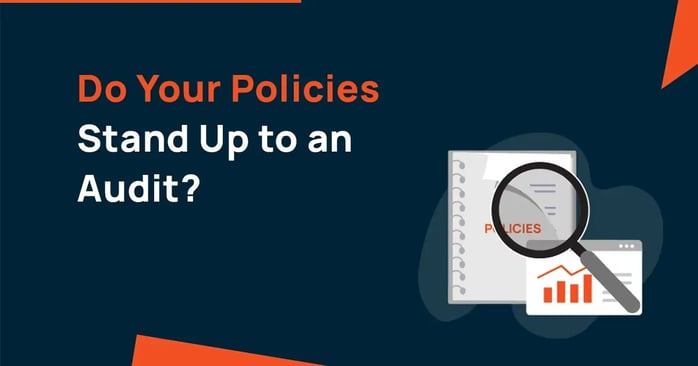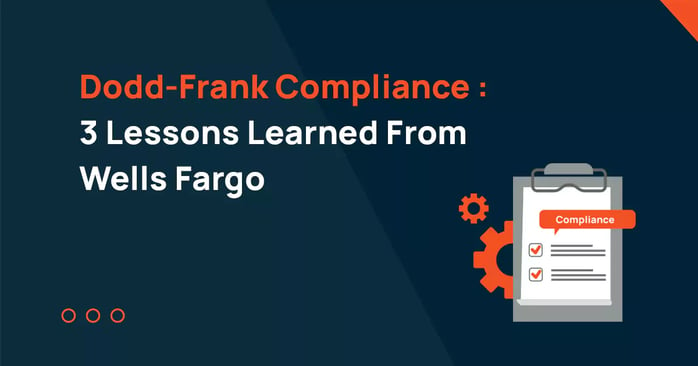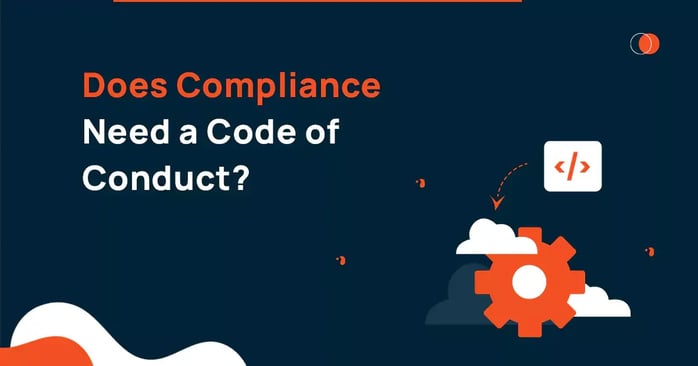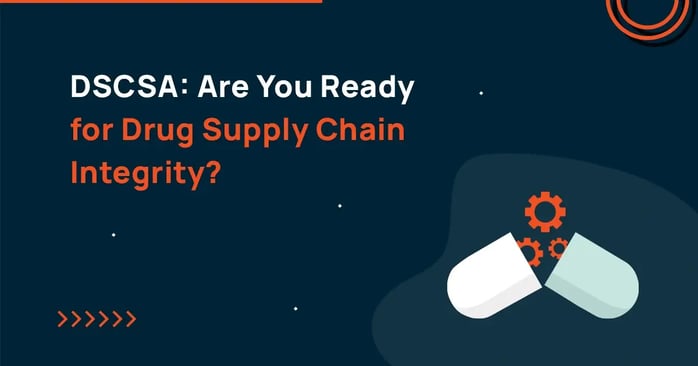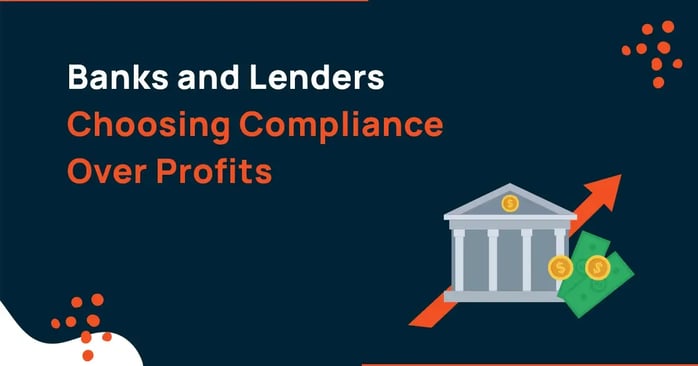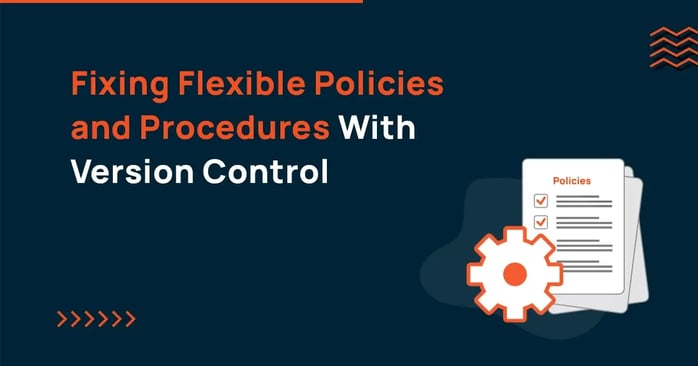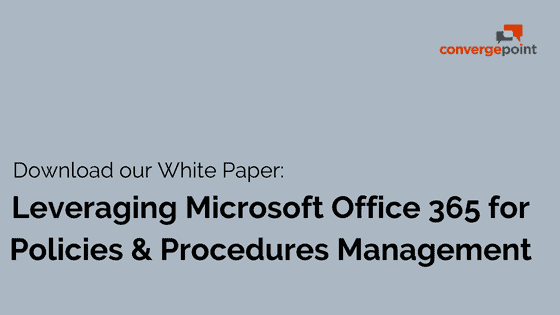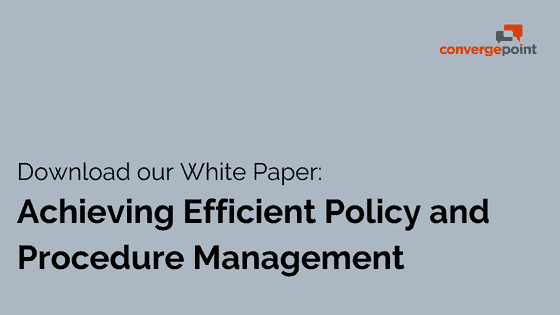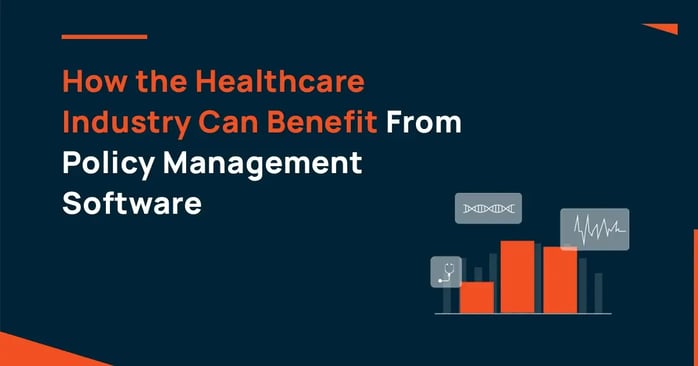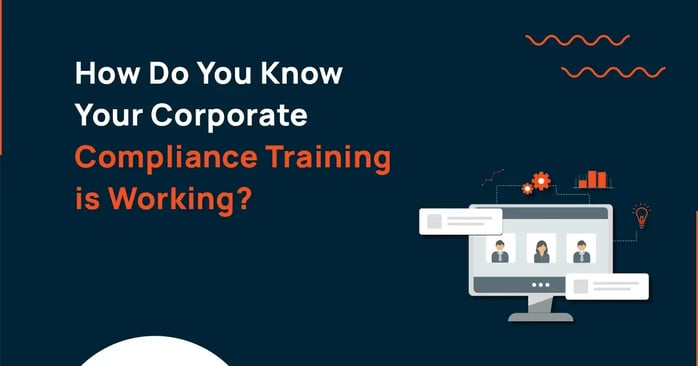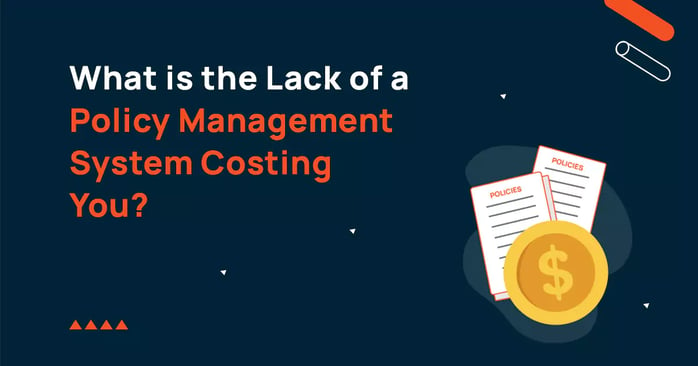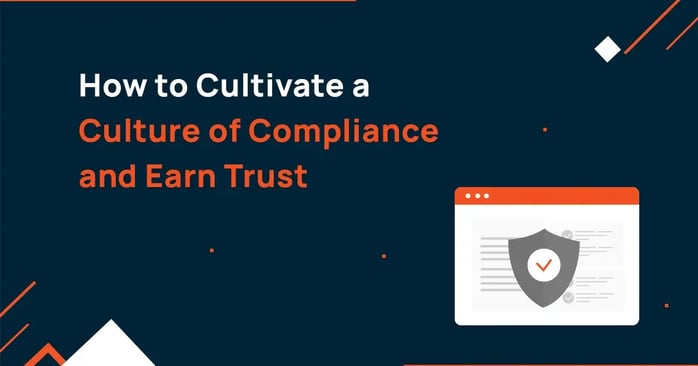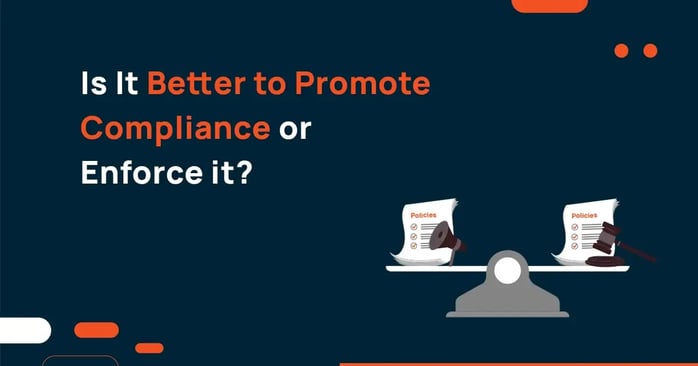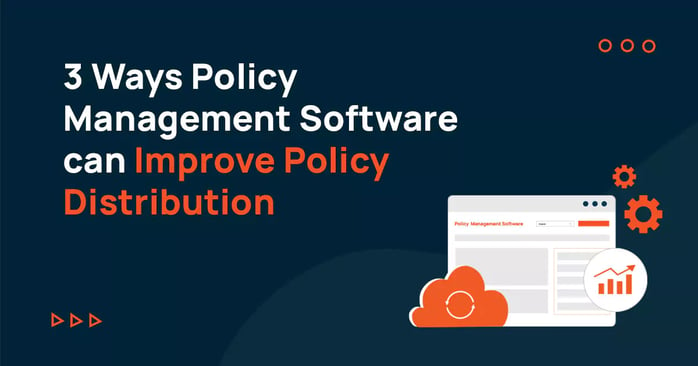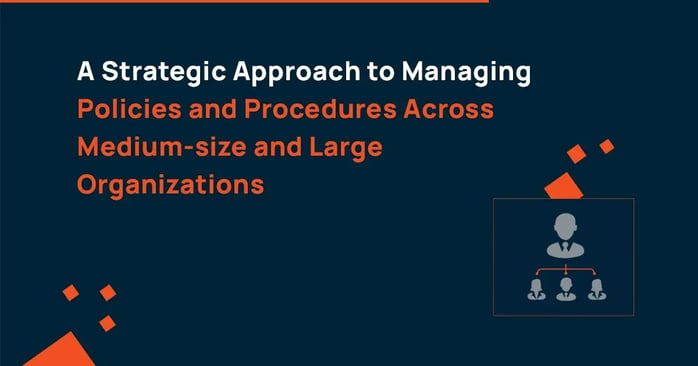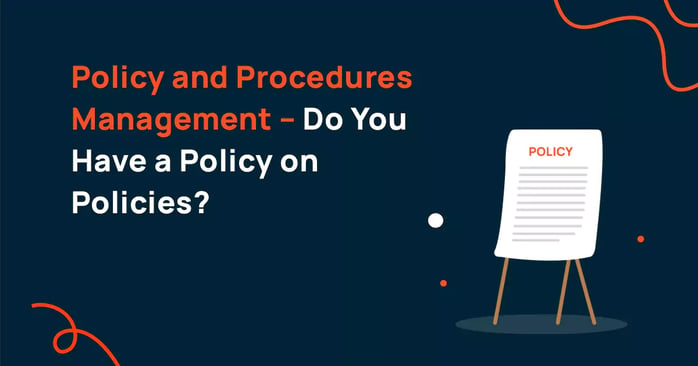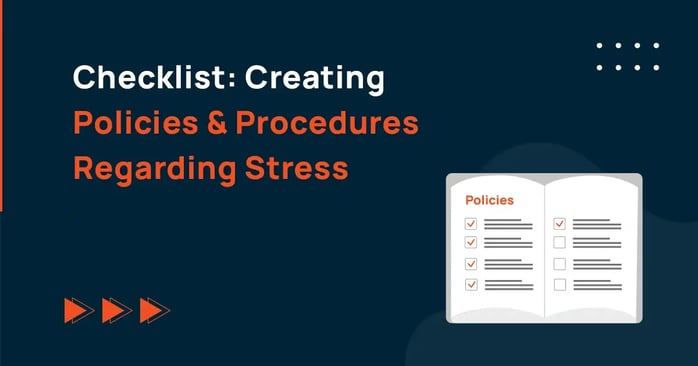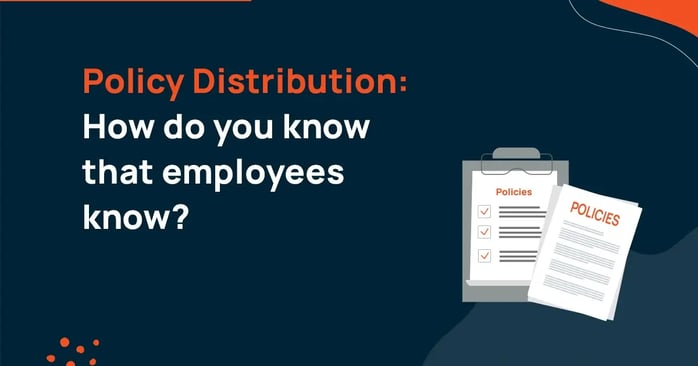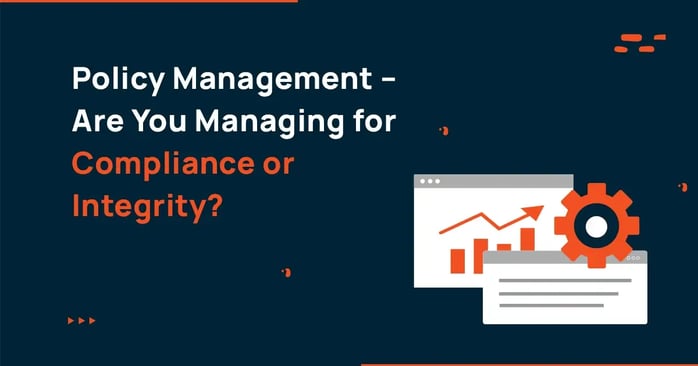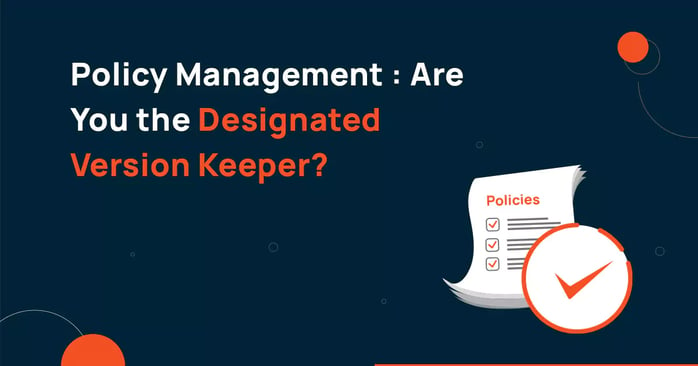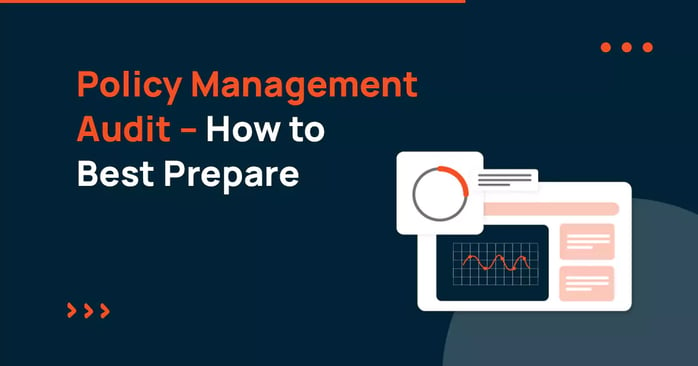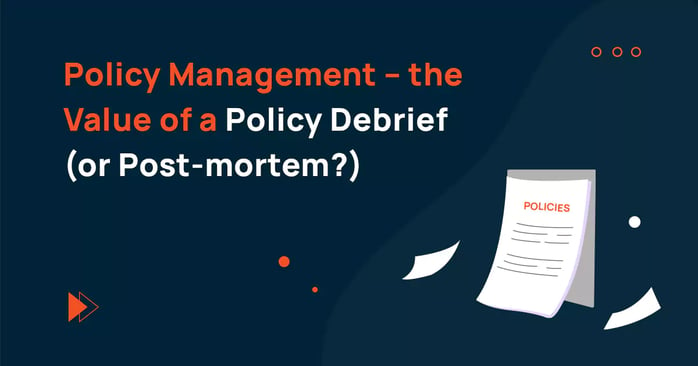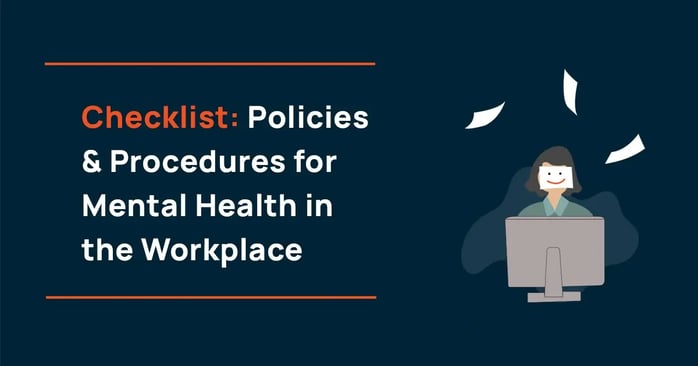Policy Management
Policy management resources, best practices articles, guides and how-to's can help optimize your processes.
How To Achieve Efficient Policies and Procedures Management Whether your company has 500 employees or 5,000, you share the same concerns:
Addressing the challenges of managing policies in your organization and streamlining policy management requires a comprehensive approach. Here are some steps that organizations can take to manage policies at scale more effectively.
Organizations need to be compliant with the latest regulatory requirements. Following manual processes to manage policies will not help organizations to stay on top of the latest regulatory needs. Automated policy management software
When your business expands quickly, it can be hard to stay on top of policy creation and management. Sure, there may be quite a few unwritten rules that employees seem to be aware of and your organization just hasn’t gotten around to putting them on paper yet, but those rules tend to cause more confusion than not.
Artificial intelligence (AI) has become entrenched in nearly every aspect of the business cycle. This is true too of AI software that aids in policy and procedure management.
Find out how policy lifecycle management in the future leverages integration, automation, and AI to streamline governance processes and decision-making.
As a manager — no matter what your specific role within the organization or what size or type company you work for — you have three important responsibilities to your employees when it comes to policies and procedures: access, education and enforcement.
You want to ensure your healthcare organization remains compliant with local, state and federal regulations, as well as industry best practices, so you create a compliance committee. Solving potential and current compliance issues — and getting your staff on board with new policies and procedures — is that simple, right?
With the U.S. Department of Health and Human Services (HSS) Office for Civil Rights (OCR) preparing to audit about 400 healthcare providers in 2015, what can you do to be ready? Whether your organization has been prepared for months or you’re just getting started,
Perhaps you have yet to consider an automated policy management software solution or you are ready to make a policy management software purchase in the near future. Taking that first step toward making your compliance management process more efficient and effective is always the toughest.
Today it seems that there is a policy along with a huge list of procedures for everything. More than that though, the policies never seem to remain the same policy for long before a tweak here and an update there is made. The result? A HR department that are run off their feet trying to maintain control of policies and procedure
We’ve all sat in meetings, and more meetings, trying to hash out policy guidelines. It takes time. It takes multiple meetings. It takes dealing with different people from diverse areas both inside and outside the organization. It takes a lot of emailing back and forth after the meeting.
For small hospitals, large healthcare networks and other medical-related organizations, navigating the ever-changing implementation of the Affordable Care Act can be tricky. Regulations have become increasingly complicated, leading to effective or enforcement dates being pushed back and organizations left scrambling
While you may have already created a list of resolutions for your personal life, it is also important to consider the changes that should be made for more effective business operations this year.Managing policies throughout the entire lifecycle can be a daunting task. From the collaboration process during policy creation to distributing
After downloading and reviewing our free guide and checklist on how to get back on track after non-compliance, you’ll be able to:
If the policy and procedure management process in your organization is currently manual, here are 10 questions you may be used to asking yourself. With Policy Management Software on Office 365, you no longer have to wonder if a policy or procedure was seen by someone it shouldn’t, or if you are editing
When your business expands quickly, it can be hard to stay on top of policy creation and management. Sure, there may be quite a few unwritten rules that employees seem to be aware of and your organization just hasn’t gotten around to putting on paper yet, but those rules tend to cause more confusion than not. Just like the telephone game we played as kids,
When your company is operating on the cutting edge of technology or seeking to establish a foothold in a new market created by modern technology, the mundane requirements of staying compliant to existing legislation can seem to be archaic and out of place. That appeared to be the position taken recently by a competitor
Every time Policy and Procedure Management comes to mind, the majority of people tends to think of large corporations and think it is a task for the large enterprise only. Often, information and resources neglect the same needs for smaller organizations altogether, but many need to realize that it is equally important
One of the seven required elements of a healthcare compliance program is a compliance committee, led by a chief compliance officer (CCO). Though 86% of healthcare provider respondents to PwC’s “State of Compliance 2014” survey said they have designated CCOs, nearly half of those CCOs have other responsibilities
Recently at the SIFMA (Securities Industry and Financial Markets Association) Compliance and Legal Society Regional Seminar in New York, Assistant Attorney General Leslie R. Caldwell presented advice to legal and compliance professionals. Caldwell stated when the Department of Justice prosecutors are determining whether
Businesses, like your organization , know that attracting and retaining top talent is essential to a business’s livelihood — which is why employee engagement has become increasingly important.
For trucking and logistics companies, safety and compliance go hand-in-hand. Not only are non-compliance penalties stiff for companies and drivers, but compliance with local, state and federal regulations are part of the foundation of transportation companies’ safety programs. The most successful companies
In our previous post, we discussed the cost of resources related to the manual management of policies and procedures in this SlideShare. In part two of our “Cost of Non-Compliance” series, we are shedding light on the next phase, which includes the penalties inflicted upon organizations for being non-compliant.
How many of your employees leave scribbled passwords on post-it notes under their keyboards on their desks or taped to the bottom of a drawer? Or, they have confidential information on their laptops, which they take home to work on?
Healthcare providers and insurers may sigh in relief at the Department of Health and Human Services’ Office for Civil Rights’ delays in HIPAA audits, but recent data breaches and cybersecurity attacks suggest that they should not wait in performing HIPAA security risk assessments and reevaluating security reinforcements.
Your employee’s knowledge of company policies & procedures makes all the difference when it comes to compliance and industry regulations. Polices and procedures are intended to act as a reference guide for certain scenarios or situations. What happens when those scenarios actually take place and your employees
Businesses know that they need to have a system made up of policies, processes and procedures. Often businesses have issues discerning which is which or use the terms interchangeably, resulting in them lacking one of the elements. All three, however, are necessary to run a successful, organized business.
What happens if a driver’s speedometer is broken in the car, they don’t get it fixed and then they get pulled over a couple of weeks later for speeding? Who is at fault?
Within the Policy Management Lifecycle there are three phases — Phase one is Creation and Renewal, the second phase is Distribution and the final phase is Acknowledgement. Below we have broken down the day-to-day realities of managing policies and procedures throughout this entire lifecycle.
After downloading and reviewing our “How to Choose the Right Policy Management Software for Your Company” free guide and checklist, you’ll be able to:
Whichever term your company uses – urgency, proactivity, bias for action, or simply getting stuff done – the modern corporate environment operates at a breathless pace that often favors accomplishment over efficiency. In this context, priorities can take on a life of their own, often at the expense of a broader perspective
When you have a large organization to run, one thing you do not want is the unorganized clutter of files and documents, especially of your policies and procedures. However, when the time arrives for the referencing of the old policies in internal and external audits, many companies regret making their decision to not consider
Make policy and procedure management at your organization a stress-free process. The goal of ConvergePoint’s SharePoint Policy Management Software is to make the creation, review, approval, distribution and acknowledgement of policies and procedures process simple for policy managers.
Businesses are dynamic and ever-evolving to meet the demands of the marketplace. We talk about mergers, acquisitions and subsidiaries as part of the common business dialogue, but we don’t often stop to think about the compliance team that holds the seams of an ever-changing environment together.
In April 2015, the Office of the Inspector General (OIG) of the Department of Health and Human Services (DHSS) released a new “educational resource” to provide guidance to the governing boards of healthcare organizations to help them meet their compliance plan oversight obligations. Entitled,
The 2013 Target breach, 2014 Sony breach and other highly publicized security breaches have pushed the need for strong cyber-security to the forefront. Often, organizations are left vulnerable to cyber-criminals for a few reasons:
Now I know what you are thinking to yourself, I have hundreds if not thousands of policies at my organization – how can I possibly look at all of these costs for every policy? What a nightmare! Instead we suggest taking a random sample of your data set, as testing a subset of policies can save significant time.
In the first installment of our The Cost of Non-Compliance Series for Policy Management, we have broken down the cost of resources involved in a manual policies and procedures lifecycle management process. Review the slideshare and see the numbers for yourself.
Without policies and procedures management, no company can survive.Policy and Procedure Management is the strong foundation established for a stable and successful future; therefore it is essential to have an effective policies and procedures management process.
How do Santa’s elves build all those toys in the workshop so efficiently? And how do Santa and his reindeer deliver all those Christmas presents to children throughout the world on time, year after year?
One of the best ways to improve employee retention is to not just train them initially, but constantly develop them by creating a work environment that fosters communication and learning. Both people and your company change over time, and if you’re looking to build long-term relationships,
Do your policies and procedures include a disaster recovery or emergency action plan? What happens when a natural disaster, power outage or other unplanned event occurs?
Policy Procedure Management - Not Difficult InfoGraph
Bloomberg Law stated it well: “No one doubts that leaders of most organizations understand the importance and benefits of written, well-defined policies.” Too often, the top management of organizations underestimates just how important safety-related policies and procedures are to a company’s strategic performance.
Sexual harassment is a hotbed issue that strikes fear in even the most seasoned of CEOs. Historically, as more women entered the workforce, employers had to figure out how to handle the interaction of genders within the office space.
6 dos and donts for policy creation. As a policy manager (no matter what department you’re in), creating policies and procedures can become monotonous and mundane when you’re tasked with drafting several documents on behalf of your department at once.
Compliance to safety policies and procedures doesn’t always translate to employees who are involved in dangerous roles. By following this checklist, you’ll be able to:
It’s easy to understand why many companies will settle for the achievement of having policies and procedures in place, waiting for their auditors to let them know when it’s time for an update:
The successful completion of a comprehensive audit can produce a range of emotions. For some, the formal recognition that your department is managed effectively, and that every ‘i’ is meticulously dotted and every ‘t’ is carefully crossed, is a badge of honor. For others who must deal with a less organized
Policy creation is a collaborative process. Gathering the input of all departments involved, and then managing the editing and review of multiple draft versions in order to arrive at a definitive ‘approved’ version requires a level of interaction that is typically underserved by emails and voicemails alone. If constant email reminders,
If you have been struggling with the quirks of a manual system for any length of time, the prospect of finally having access to a purpose-built software solution to help manage your department can be an exciting one. A manual system that meets the definition of ‘more quirks than attributes’ can lead you down the path of being willing
Employee safety is of critical importance to every organization, and no compliance specialist would ever consider anything less than complete adherence to all relevant regulations and safety standards. Unfortunately, many companies can still undermine that commitment as a result of a common but flawed assumption
Policy creation and management have come a long way in a very short time. It wasn’t that long ago that providing reassurance to your CEO or Board of Directors that your company was on top of compliance meant giving tours of file rooms with neatly organized binders of hard copies of documents with signatures
Policy management has an interesting relationship with the lifecycle of a company. In the early days, the leadership team ensures that the company is fully compliant with all regulations needed to operate, and all energies are then focused on product and service quality to ensure that all sales targets
Any complicated business process requires a team of professionals to monitor and handle properly. The same applies with complex policy management processes, as teams of compliance and policy experts micro-manage every element associated with these processes on a daily basis.
When it comes to handling your organization’s most critical policy and procedure documents, collaboration is what drives success. It’s the spark that ignites constructive observations and diverse thought, and it’s the process that paves the way for quality and compliant results.
With the rise of cyber-attacks against businesses all around the world, federal regulators are encouraging organizations to be proactive in the way they prepare for them. Generally, IT departments are in charge of implementing security measures to mitigate the risks of a cyber-attack and to protect valuable data.
When budgets are up for review, most organizations justify their policy management and compliance efforts as a commitment to the prevention of unlawful conduct. However, being in compliance with regulations that are designed to prevent such conduct doesn’t mean that it won’t ever happen.
Do you know the key elements to create safety policies and procedures? After downloading this checklist and evaluating your current policy and procedure creation process, you’ll be able to:
A new policy usually represents a step forward for an organization. Whether you’re changing internal processes as a result of new equipment or technology, or responding to changes in local, state or federal regulations, every new policy initiates a cycle from creation through review, revision, and formal approval.
A key requirement for an efficient policy management environment is the ability to stand up to an audit. Whether it is a regulatory compliance audit, an audit by an accrediting or licensing board, or simply an internal spot check to verify that best practices are followed, the ability to quickly and easily verify important
Wells Fargo’s recent fine of $100 million from the Consumer Finance Protection Board (CFPB), and $85 million from two other sources, has the entire compliance realm talking. The bank was found to have opened 2 million unauthorized bank and credit card accounts without customer knowledge in order to gain incentives of opening
Compliance typically proves to be much easier to comprehend than to implement as an organizational practice. The requirement to follow all relevant industry regulatory standards and policies is a straightforward concept to grasp for most corporations unless they make a conscious choice to follow a different path that prioritizes
When the Drug Quality and Security Act (DQSA) was signed by President Obama on November 27, 2013, advocates hoped that the confusing patchwork of State laws governing drug pedigree and tracing would finally be replaced by a comprehensive solution for the ‘3T’s’ (Transaction History, Transaction Statement,
After settling with several of the largest financial institutions in the country over alleged abuse of Federal Housing Administration (FHA) lending practices, the Department of Justice targeted one of the nations largest mortgage lenders in April 2015 with a lawsuit alleging systematic attempts to “elevate profits over compliance.”
Real estate agents and investors are often quoted as stating categorically that the three most important rules are: “location, location, location.” By the same measure, compliance is all about “consistency, consistency, consistency.” Auditors look for policies that are in compliance with all current local, state and federal regulations
When business leaders and high-level decision-makers examine their organizational policy management processes, they routinely identify whether regulatory compliance and corporate cohesion are met at satisfied levels. However, the process can be challenging if the right systems are not implemented.
Whether your company has 500 employees or 5,000, and whether you’re the CEO who oversees the entire organization or you manage a small team of five employees, you share the same concerns:
The healthcare industry is one of the highest-risk industries in the United States. Healthcare is an industry built and sustained on the mantra of ‘do no harm,’ a type of social contract with its patients, employees, and even greater society.
Regulatory compliance is a legal obligation for any company, and the cost of that compliance is accepted as a required part of the operating budget. Making sure that employees are adequately trained on the details of those compliance requirements can be more challenging to justify.
As an important member of your compliance or policy management team, you understand the importance of an efficient policy management system and the wealth of benefits it brings to your organization. However, you also understand the costs that come along with it, and oftentimes you might be paying more for your policy
The cornerstone of success for every business is trust. Without it, an organization can become vulnerable to a host of code violations and malfeasance. That is why most businesses rely on the three P’s to develop and hone the best practices that will help them earn that trust: people, policies and procedures.
Advocates of increased regulation through such legislation as the Sarbanes-Oxley Act of 2002 and the Dodd-Frank Wall Street Reform and Consumer Protection Act of 2010, argue that corporations cannot be trusted to self-regulate and, as a result, need a comprehensive framework of regulatory standards to enforce compliance
If you were to look up the term ‘necessary evil’ in a dictionary, there should probably be a picture of an auditor included somewhere in the definition. Everyone can appreciate the valuable work that auditors do in keeping organizations in compliance, but nobody wants to see them show up in their department
When thinking of strategic versus operational within an organizational, the logical idea is that policies and procedures are firmly in the operational realm. Although strategy and operations are intertwined, there is no denying that policies and procedures are critically
When compliance departments and legal teams spend hours and countless resources to develop policies and procedures for their respective organization, they expect every employee to familiarize themselves with them and to make an effort to uphold those guidelines.
If you are responsible for the creation, monitoring, and revision of all operational policies for your organization, being asked if you have a “policy on policies,” may seem like a totally nonsensical question. Everything you do is about policies, so why would you need another one?
When creating policies and procedures regarding stress, make sure to consider these factors in your creation process. After downloading our Policies Procedures Regarding Stress checklist, you’ll be able to:
Creating a new policy or updating an existing one can feel like herding cats at times. Tracking authorship and approvals through numerous rounds of revisions involving multiple departments is a challenging and frequently frustrating process. Maintaining control over the inevitable version ‘creep’ as each contributor
Regulatory standards and industry best practices serve a valuable purpose in helping to minimize corporate misconduct. In this age of a global Internet and the constant threat of viral messages through social media, any such corporate transgression can be brought to the attention of a global audience
The creation of a new policy or the revision of an existing one can be a stressful experience. Limited resources, combined with unrealistic delivery deadlines, can create a highly pressurized situation where all participants are eager to get the project off their respective to-do list and move on to the next pressing item.
When audits are due at organizations around the nation, compliance and legal departments are stressed to provide the necessary documents and resources to meet government or industry regulations. Preparations to pass audit tests should begin well before the scheduled date and take lots of time,
Policy creation using manual systems often consists of a stressful push towards a hard deadline with just a brief regrouping period before starting the process all over again with a new policy or a revision of an existing one. In this environment, survival is seen as a successful outcome
The mental health of your employees should be one of your priorities as an organization. Without healthy employees, you won’t have the resources you need to move forward.
The drafting of policies should not be unnecessarily complicated. Nor need it be a chore or something that everyone in your team dreads! Thankfully, today there is software that improves the policy-drafting process with automated and intuitive features.
Prepare for your next policy and procedures audit with structured reviews, robust version control, and clearly defined effective and expiration dates.
Updating corporate policies to reflect changing regulations is crucial. Policy management software can help keep your company policies current and compliant.
ConvergePoint's Policy Management Software, developed on the Microsoft Office 365 SharePoint platform, is a comprehensive solution that simplifies the entire policy lifecycle.
Create and disseminate procedures that clarify these regulations with the help of ConvergePoint's SharePoint Policy Management Software.
Implementing a new policy management software in your organization is a significant task. With our step-by-step guide, you can evaluate the effectiveness of your current system and choose the best software that fits your organization.
Ensure Patient Privacy and other HIPAA security rules are managed efficiently with Healthcare Policy Management Software.
Discover key considerations for successful policy review and identify essential features in policy management software for efficient governance.
Download our free guide to learn how ConvergePoint's Policy Management Software on Office 365 simplifies processes and protects your organization.
The process of policy creation can be a painful one at times. Depending on the relative complexity of the subject area, the creation process can involve multiple representatives from multiple departments.
Download this essential guide on how to ensure employee accountability and compliance through effective policy management, courtesy of ConvergePoint.
Download Policy Management Software Data Sheet. Read policy management system overview, technical features, deployment and integration requirements.
Automate the distribution of policy and procedures with a policy management system. Here are 3 ways policy management software can help with distribution.
When creating a policy, there is some basic information that should be included. We have broken down an effective policy template into 10 different sections.

